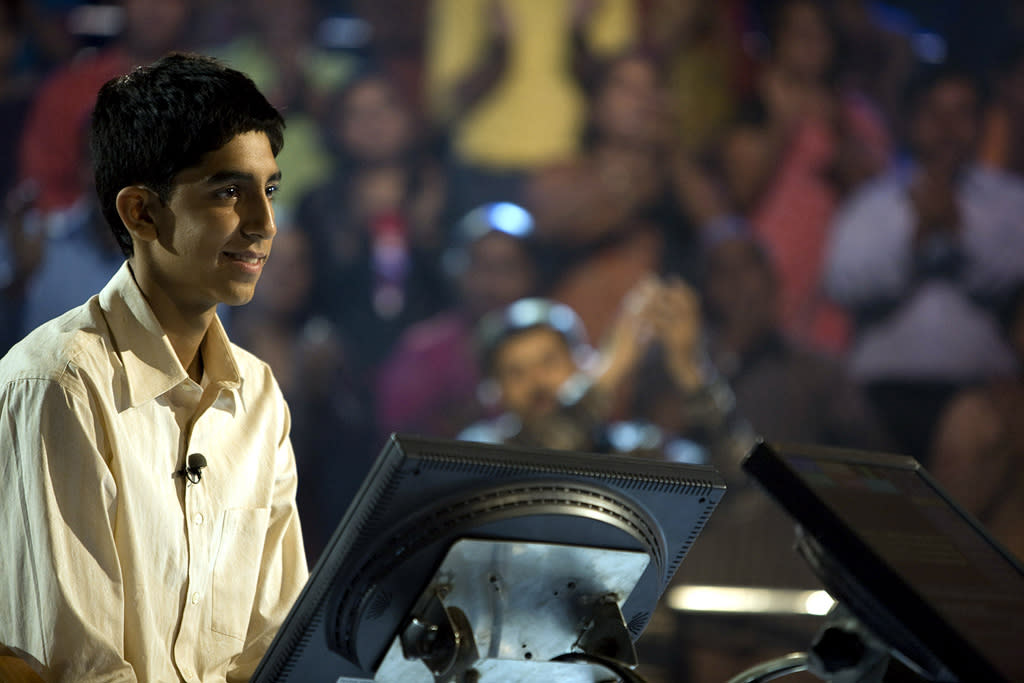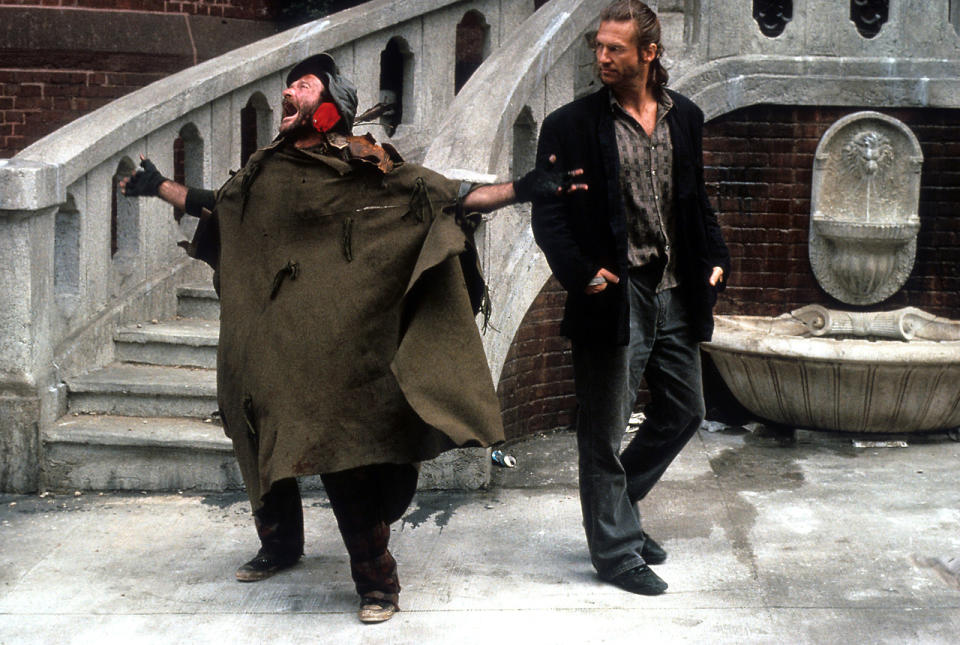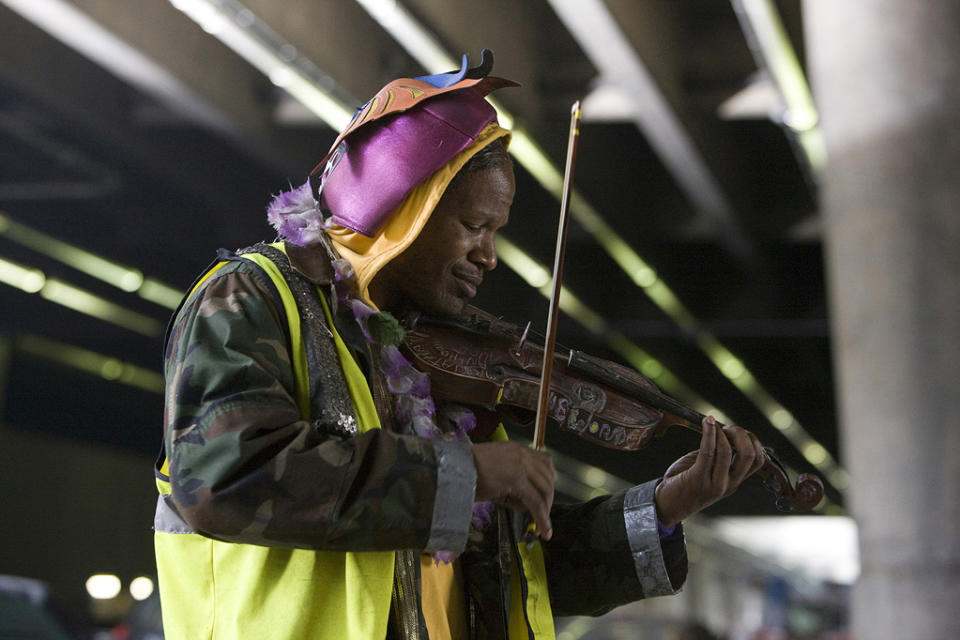Perpetuating the poverty myth: How Hollywood gives us the wrong ideas about poor people

When was the last time you saw a movie about a person or family struggling with poverty? Though economic hardship is an everyday occurrence, with more than 43 million Americans living below the poverty line, the topic is surprisingly rare in Hollywood films. And yet many common misconceptions about what poverty looks like, and how people can overcome it, have been reinforced by movies like Slumdog Millionaire, Precious, The Pursuit of Happyness, and The Fisher King. In his book Ghettoes, Tramps, and Welfare Queens: Down and Out on the Silver Screen, Stephen Pimpare (author of A People’s History of Poverty in America) takes a comprehensive look at how poverty and homelessness appear on film, from the silent era to the present day. Pimpare believes that at this time of deep divisions in America, movies that accurately portray modern-day poverty are more important than ever. “We are geographically so segregated, racially segregated, and we are very much economically segregated — so it may be that for growing numbers of people, the only opportunities they have to gain insight into lives of poor and low-income people are through mass media,” he tells Yahoo Movies. Here are six ways that the movies have made us believe some extremely wrong-headed poverty myths.
1. Homeless people in movies are almost always men. In real life, not so much.
Asked to picture a homeless person in a movie, your mind may go to Charlie Chaplin’s Little Tramp, Robin Williams in The Fisher King, the evil sewer dwellers of C.H.U.D., or the homeless man Bill Murray saves in Groundhog Day. What do they have in common? Whether they’re in the film for drama, horror, or comic relief, most characters identified in movies as beggars, hobos, or bums are men. In reality, most Americans who live in poverty are women and children. “Women are radically more likely to be poor than men are, and that’s historically always been true and it continues to be true,” Pimpare tells Yahoo Movies. Particularly invisible are the women most likely to be poor: elderly women. Because of factors like wage inequality, decline in Social Security benefits, and a longer lifespan than men, women often struggle with poverty in their later years — a fact of American life “that we just don’t see on film at all, to the best of my knowledge,” says Pimpare.

2. In the movies, poverty is an obstacle that can be overcome with sheer determination.
When a poor person is the protagonist in a film, the story arc is usually the same: With hard work, determination, and a little bit of luck, our hero escapes dire circumstances and is rewarded with a new life of wealth and success. In reality, extreme poverty is something that can rarely be overcome without institutional changes. But the “bootstraps narrative” has always been part of the American dream, and can be found in films ranging from My Fair Lady (the highest-grossing Hollywood film in history that has poverty as a main plot point, about a turn-of-the-century flower girl who transcends her station by learning proper English) to The Pursuit of Happyness (in which Will Smith plays a homeless man who becomes a wealthy stockbroker) to Slumdog Millionaire (about an orphan from India’s slums who wins a trivia game show). Of that last film, which won the Best Picture Oscar in 2009, Pimpare says, “The major critique I have of it is, for all the magic or good fortune that is hovering around [Dev Patel’s character] that contributes to him getting answers to those questions correct, the ultimate lesson still is: If you simply apply yourself and work hard, anything is possible. But what about all those other kids that he grew up with, who will never, no matter how smart they are or how diligent they are, escape those circumstances?”
3. Movies rarely challenge our worst stereotypes about people who receive public assistance.
Although most welfare recipients with children have at least one job, the idea that people who receive government aid are lazy and immoral is deeply embedded in American movies. One of Pimpare’s examples of this is Precious, which he describes as a film “filled with unbelievably gorgeous, empathetic performances” that nevertheless “doesn’t challenge anybody’s notion at all about what those low-income communities of color look like.” The character played by Mo’Nique, an abusive, lying mother, fits every negative stereotype of women on welfare. Having spent a decade working in food kitchens and soup pantries in New York City, Pimpare has no patience for the narrow representation of families struggling to put food on the table. “Precious really does, for my money, take the very ugliest, most pernicious stereotypes about what poor communities and poor families on welfare look like, their own culpability for their own poverty, the dysfunction, and the violence — the list goes on,” he says. “I think that it feeds back to the audience everything that the political culture has told them to think about those people. So it’s comforting [to audiences] in that way.”
4. Many movies about poor people are actually about the middle-class heroes who “save” them.
Strange as this may sound, very few movies about people living in poverty are actually about the people living in poverty. Take The Soloist, in which Jamie Foxx plays Nathaniel, a homeless violinist; the protagonist of the film is actually Robert Downey Jr.’s character, Steve, whose relationships and writing career are saved when he decides to help Nathaniel. Similarly, the hero of The Fisher King isn’t the homeless man played by Robin Williams, but the bitter radio DJ who befriends him, played by Jeff Bridges. And judging from the trailers, the upcoming film Same Kind of Different as Me isn’t centered on Djimon Hounsou’s homeless character, but the middle-class white couple (Renée Zellweger and Greg Kinnear) who embrace him. In these films and many others, including The Blind Side and Groundhog Day, poor characters are used to further the growth and change of middle-class protagonists; the audience is not asked to identify with them, and they don’t get to be the heroes of their own stories.

5. If you’re a homeless or poor character in a movie, that is invariably the most important thing about you.
Poor people have thoughts, opinions, and personality traits that have nothing to do with being poor, but you wouldn’t know it from the movies. Too often, says Pimpare, a movie character’s poverty is “all we know, and it’s the only thing that matters about them. There’s no other life to them beyond that; that is their identity, and that is their narrative function.”
6. Even when the economy is dire, the big screen rarely reflects that reality.
You’d think that Hollywood would become more compassionate toward poor people during times when most audience members are facing economic struggles. In truth, it has never made much of a difference. During the Great Depression, few films attempted to come to grips with America’s new day-to-day reality. “We get a lot of silly rich people, we get a lot of dancing in clubs on rooftops in New York, we get a lot of that sort of escapism,” Pimpare says of Depression-era studio films (notable examples of which include My Man Godfrey, It Happened One Night, and most of Shirley Temple’s oeuvre). “But we don’t see Hollywood taking this moment of horrifying crisis and reimagining the world,” he observes. “You don’t see this deep analysis of politics or economics or class relations, by and large.”
Worth noting: Some films, mostly independent, have gotten things right.
In his research, Pimpare did find examples of films that depict poverty and homelessness in accurate and realistic ways, many of which were made outside the studio system, like Winter’s Bone and Chop Shop. In terms of classic films, Pimpare counts The Grapes of Wrath among his favorites. And yet so few films have broached the subject of poverty in the first place that it’s hard not to wonder: Do realistic films about poor or homeless people even have an audience? Pimpare thinks they could, if those stories were given a chance. “I don’t know that people are naturally unwilling to watch more complicated stories of marginalized populations,” he says. “I think that there are so few opportunities they get to do that that they don’t ever have an opportunity to develop that as a habit. Whereas if I want to watch a movie set in outer space where stuff blows up, I’m covered, you know?”
Read more from Yahoo Movies:


